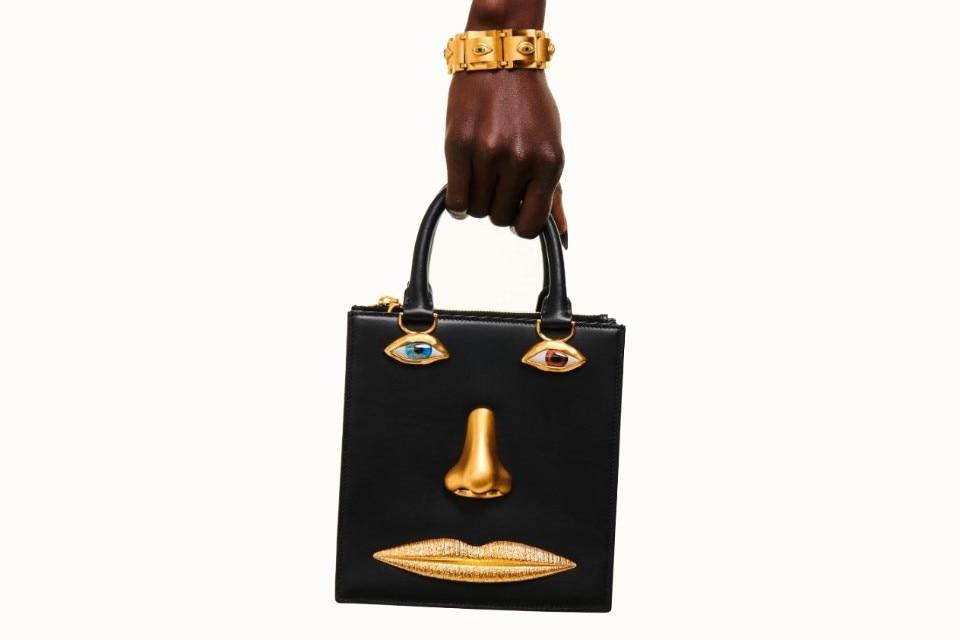by Silvana Annicchiarico
Nothing could be more wrong than thinking of them as mere fashion accessories or tools for carrying and keeping personal items. The It Bags are much more than that. They are cultural icons, objects of desire, and at the same time status symbols. They say a lot about the wearer. They convey a sense of rarity, preciousness, and uniqueness. They mark eras and generations. They do not just reflect the taste of society; they often anticipate and shape it. They become style and identity symbols. What makes a simple bag an It Bag goes beyond design and functionality and almost always involves a variety of factors: from the wearer’s celebrity to its aesthetic and cultural appeal, to its ‘story’.
They are often a financial investment as well; often expensive, they generally maintain or even increase in value over time, becoming collectible items. Immediately recognizable, coveted, and desired, the It Bags are emblematic of a lasting luxury that transcends fleeting fashion trends. And precisely because of these characteristics, the It Bags are often the target of counterfeiting and illegal imitations, aimed at those who cannot afford them and seek cheaper alternatives, even if they are of undeniably and visibly inferior quality. However, imitation and copy only serve to increase the value and desirability of the original one, which almost always becomes an icon of the collective imagination.
1. Cabat by Bottega Veneta, 2001
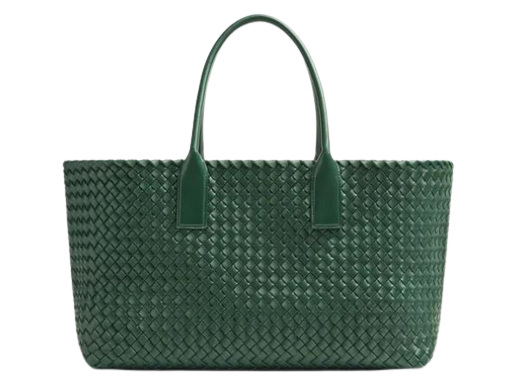
No logos in plain sight. The weave of woven leather as a sign of identity and recognition. This is where the charm of Bottega Veneta comes from: innovation, craftsmanship, a discreet, barely whispered but unmistakable luxury: soft leather dowels, impossible to machine and therefore woven by hand, follow a precise diagonal pattern to create a real fabric, resistant and uniform. Celebrated in the cinema (in the film American Gigolo) and by artists such as Andy Wahrol (who dedicated a short film to the Maison in the 1980s entitled Bottega Veneta Industrial Videotape), Bottega Veneta is now synonymous with excellence and quality. One of its most iconic models is the Cabat Bag, a two-handled shopper with a rigid structure that requires no lining because it is woven leather both inside and out.
2. Anatomy Jewerly Bag by Schiaparelli, 2023
With a rectangular shape and a double gusset, the Face Bag by Schiaparelli surprises with its minimalist design, featuring a decoration that mimics the anatomy of a human face. The eye is inspired by a jewel created for Schiaparelli by Jean Cocteau in 1937. As for the nose and mouth – made of golden brass – they harken back to the collaboration with the surrealist genius Salvador Dalí, also dating back to the Thirties. The ‘shocking pink’ lambskin lining has two compartments, separated by a large, zippered pocket and applied pockets. Originally designed by Madame Elsa and reimagined today by Daniel Roseberry, it is both elegant and playful, imbued with the prestige of the great artists who have left their mark on it, making it one of the most coveted It Bags in the world.
3. Bao Bao Bag by Issey Miyake, 2000
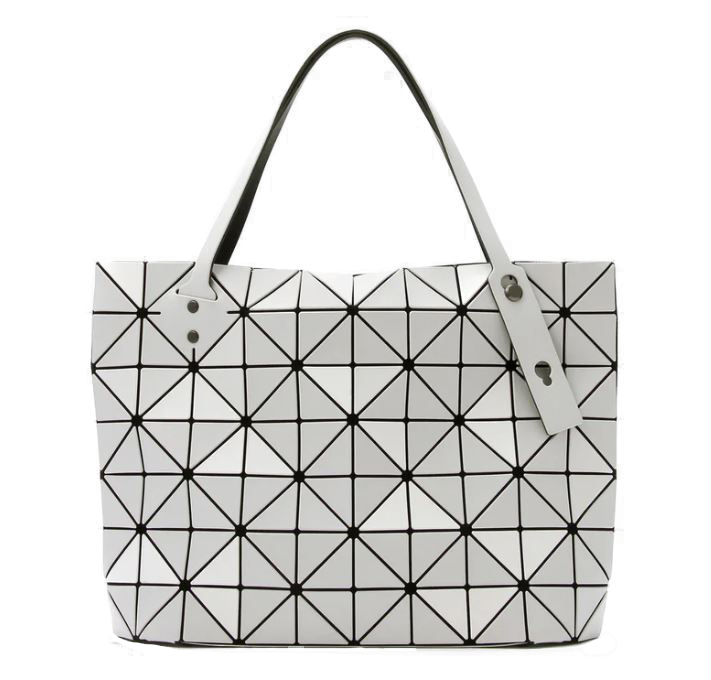
For some, it is a futuristic fantasy, while for others, it evokes eclectic architecture. It is composed of many triangular-shaped fragments that create ever-changing shapes depending on the contents and the way the bag itself is used. Bao Bao – both flexible and functional – is one of the most beloved bags by designers worldwide due to its design approach that skillfully blends technological experimentation and aesthetic exploration. First introduced in the year 2000, it owes its name to the Guggenheim Museum in Bilbao, designed by Frank Gehry and inaugurated in 1997.
4. Chanel 2.55, 1955
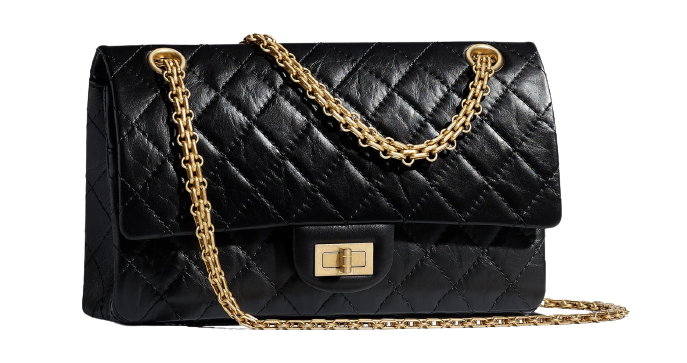
Coco Chanel created it in 1955. It has a rectangular shape, elegant quilting, and a red lining. However, the real innovation is the chain strap – inspired by the keychain of the nuns at the orphanage where the designer grew up. For the first time, a bag that frees women’s hands from the need to hold it and gives the wearer an independent, sought-after, and modern status was designed. It takes approximately 18 hours of work and the efforts of many craftsmen to create a single Chanel 2.55 shoulder bag: a lengthy and meticulous production process that combines advanced technology with patient handcraftsmanship. In 1983, Karl Lagerfeld, who had become the creative director of the fashion house, intertwined a strip of leather with the chain strap and added two ‘C’s on the front clasp, creating the 2.55 Classic Flap that we know today.
5. Birkin Bag by Hermès, 1984
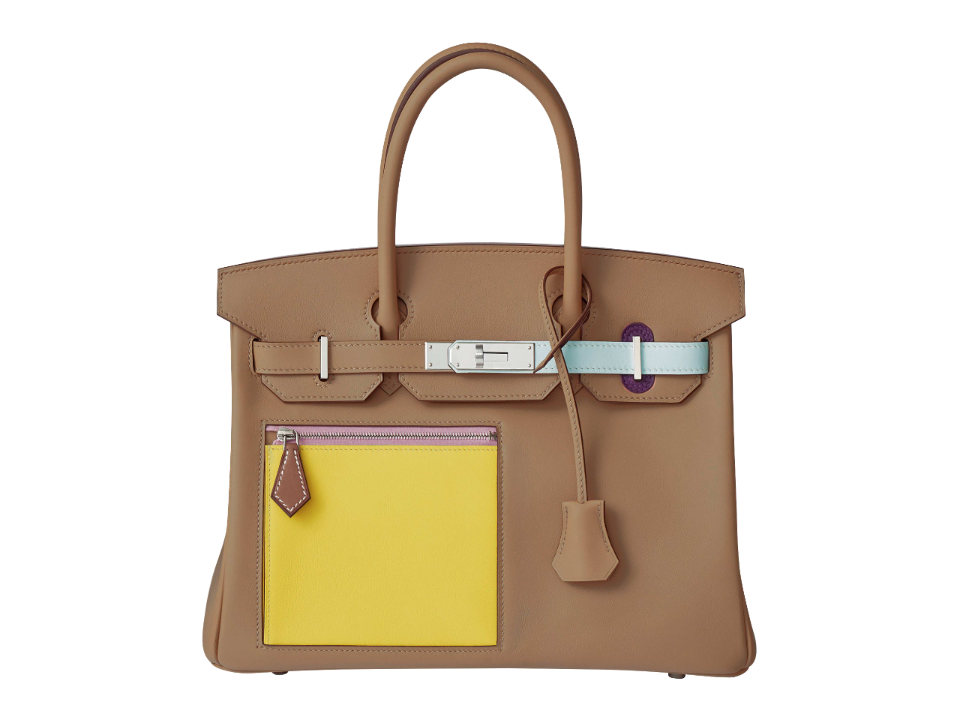
It was born in 1983 when Jane Birkin and Hermès Group CEO Jean-Louis Dumas met on an Air France flight and got acquainted. They started talking about handbags, and he promised to design a capacious yet elegant bag for her. Thus, an elite handbag destined to become a cult was born: extremely expensive, highly coveted, and almost unattainable – there are often very long waiting lists to acquire one. In its classic version, it comes in the distinctive Hermès house color (orange), but it is also available in many other colors and various leathers, ranging from black to beige, red to pink, and from ostrich leather to crocodile leather. Legend has it that it is the world’s most expensive bag: in 2017, a rare Himalaya Birkin was auctioned by Christie’s in Hong Kong for $380,000.
6. Louis Vuitton Speedy 30, 1930
It was born in 1924 from an idea by George, the son of the founder, who saw in the cotton canvas handbag with rubber coating a way to satisfy an increasingly demanding clientele eager for modernity, independence, and speed. The Speedy, adorned with the distinctive LV monogram that imparts authenticity and preciousness to the bag, quickly became a legend. But what truly solidified its status was none other than Audrey Hepburn in the 1960s. She asked the fashion house to create a Speedy that was 5 cm shorter and more conveniently portable for her. She would then proudly carry it from one airport to another or stroll the streets of Paris arm in arm with her friend, the designer Hubert de Givenchy.
7. Jackie 1961 by Gucci, 1961
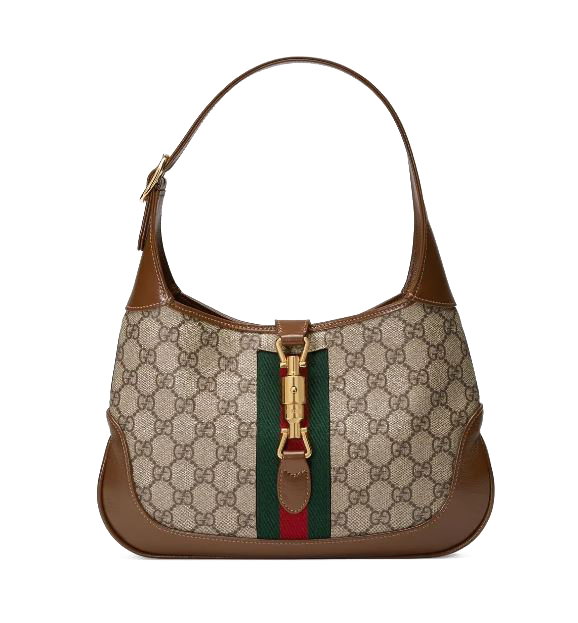
With its simple design, curved shape, and gold-tone metal clasp, the Gucci bag made its debut in 1961 and quickly became an essential accessory for the jet set of the 1960s and 1970s. Its popularity soared when Jacqueline Kennedy, the American First Lady and a muse to designers and creatives, became obsessed with it, so much so that she gave it her own name. Crafted from various leathers, it was rediscovered by Alessandro Michele in 2020, who brought it back into the spotlight and refreshed it in three different sizes (mini, small, and medium), solidifying its reputation as an enduring and timeless It Bag.
8. Baguette by Fendi, 1977
In 1997, Silvia Venturini, then creative director of Fendi accessories, worked closely with Karl Lagerfeld to create an entirely innovative handbag. An object with clean and essential lines, equipped with a very short shoulder strap, that, when worn, allows the accessory to be carried under the arm – as Parisians do with their crispy baguettes. With its slightly elongated horizontal shape, it is refreshed with different fabrics, inserts, and decorations in each new collection. It gained even more fame thanks to Sex and the City and the many celebrities who wore it, from Naomi Campbell to Madonna, Gwyneth Paltrow, and Julia Roberts.
9. Prada Nylon Backpack, 1984 (Re-Nylon 2019)

Launched in the 1990s, the Prada black nylon backpack succeeds in making the humble nylon thread into a luxury icon. Previously, nylon was primarily used in sportswear because of its lightness and practicality. However, Miuccia Prada dared to challenge bourgeois tastes characterized by handbags and leather goods, defying the concept of chic with an unconventional aesthetic, and showcased models made from a material that was considered far from the concept of fashion. In doing so, her nylon bag became an obsession of contemporary fashion, remarkably combining modernity and practicality, glamour and innovation.
10. Motorcycle Bag by Balenciaga, 2001
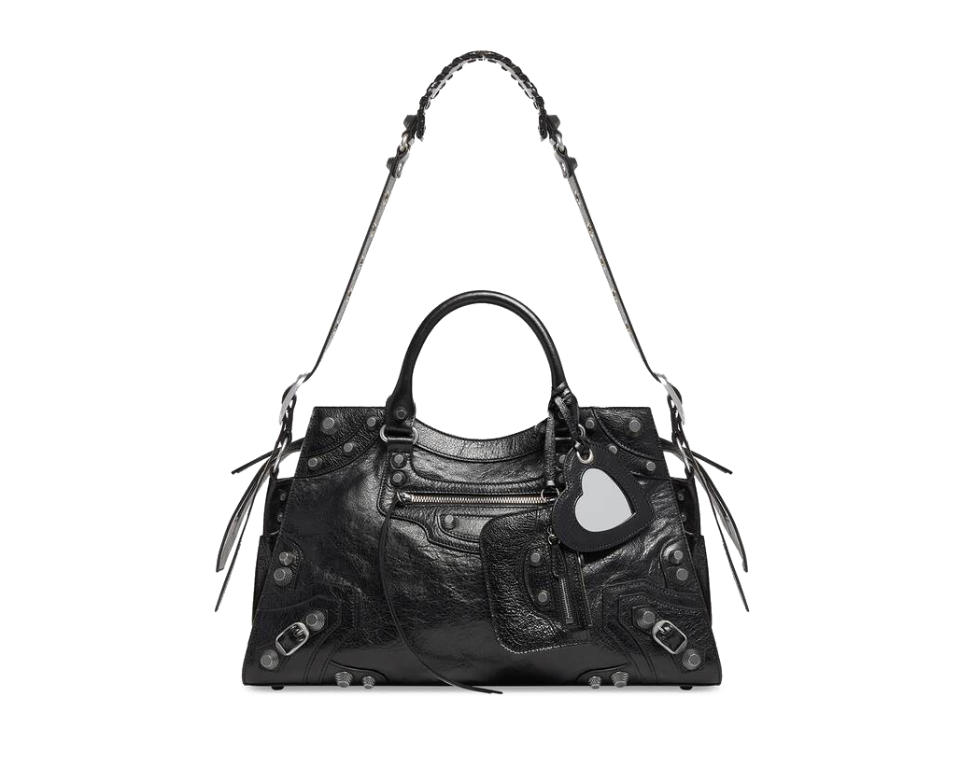
It was born in the early 2000s thanks to the idea of a then-25-year-old Nicolas Ghesquière, who chose to go against the grain. As logos such as Gucci’s GG and Louis Vuitton’s LV were becoming more and more successful, he proposed creating a bag without visible logos, adorned with studs and buckles, and featuring a somewhat grunge style. The Balenciaga executives were not sure about the proposal; they found the bag too light, soft, and lacking structure. However, they decided to put it into production. The success was immediate and exceeded all expectations. With its somewhat rebellious design, it quickly set trends and revitalized the brand’s fortunes (and revenue). Sienna Miller, Kate Moss, and Nicky Hilton are just a few of the many celebrities who became ‘Balenciaga addicted.’
11. Cassandre by Yves Saint Laurent, 1962
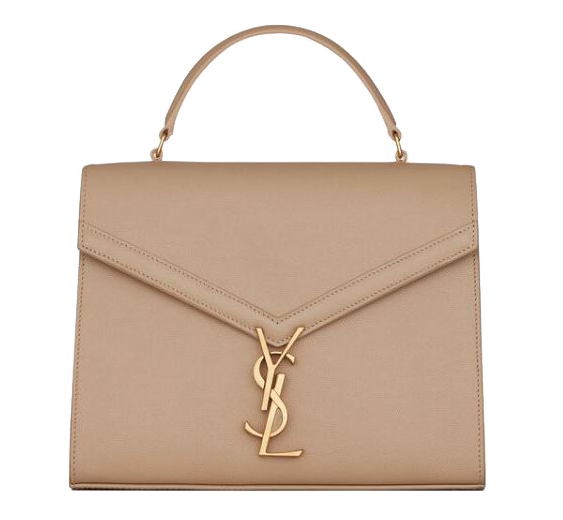
Designed as an envelope clutch with a chain strap, featuring gold-tone details, the distinctive YSL logo plaque, tone-on-tone stitching, and a front flap closure, among all the It Bags, Yves Saint Laurent’s Cassandre is the most compact and, at the same time, one of the most sensual, thanks to its ability to break the rigidity of geometric lines with its quilted leather and the prominently displayed golden logo. The name pays homage to Adolphe Jean Marie Mouron, known as Cassandre, the brilliant graphic designer who created the legendary fashion house logo in 1961, featuring the founder’s three initials interlocking vertically.
12. Lady Dior, 1994
Originally called chouchou (French term for ‘pet’), the Lady Dior bag got its iconic name change in 1995 when France’s First Lady, Bernadette Chirac, gifted an unpublished version of this bag to Lady Diana during her official visit to Paris. The black leather bag became Lady Diana’s favorite accessory to such an extent that the model was first nicknamed Princesse and later officially became the Lady Dior. The quilted pattern on the bag is referred to as ‘cannage’ in homage to the chairs of Napoleon III upon which Dior’s guests sat during his fashion shows. The metallic charms featuring the initials of the fashion house’s name pay tribute to the lucky charms that Christian Dior himself often carried, as he was known to be quite superstitious.
13. Antigona by Givenchy, 2010
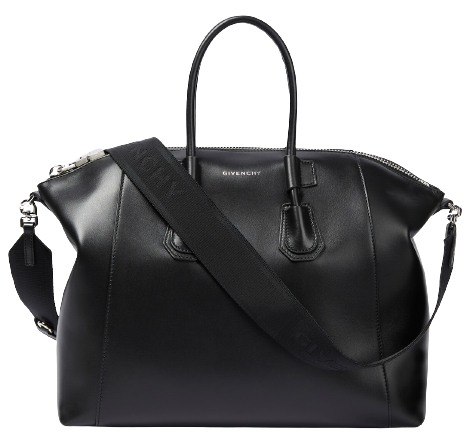
Created in 2010 by Riccardo Tisci, who was the creative director of the fashion house at the time, this handbag takes its name from the world of classical tragedies and embodies a perfect balance between elegance and practicality. Simple and refined, it manages to blend a key element of the Parisian fashion house’s aesthetics, the combination of masculine and feminine charm. Ten years later, in 2020, it was reinterpreted with the Antigona Soft model, which is softer and more sensual compared to the original design.
14. Falabella by Stella McCartney, 2010
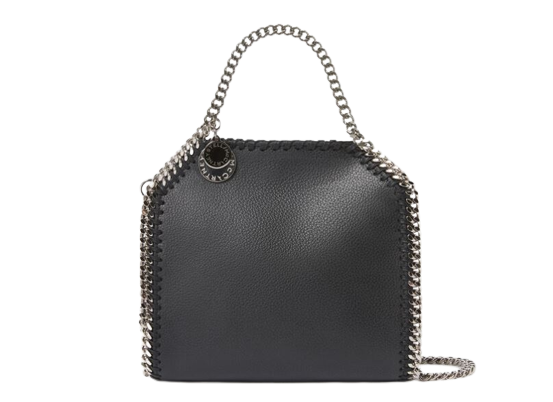
The name ‘Falabella’ comes from a breed of Argentine ponies that are so small they do not exceed 80 cm in height. Despite the source of inspiration, the materials used for the bag do not come from the animal world. Stella McCartney, known for her strong environmental sensibility, was one of the first designers to create an iconic bag without the use of real leather. It is a comfortable and soft yet luxurious travel bag, outlined by a chain running along its fluid perimeter, and made with eco-friendly and cruelty-free materials such as faux leather and recycled nylon.
15. Schiaffo Bag by Cinzia Ruggeri, 1983
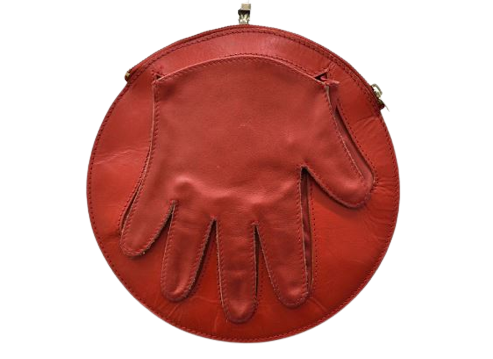
The Schiaffo Bag (Italian for ‘Slap bag’) is a round-shaped bag in red leather with an integrated right-hand glove. It was conceived not only for carrying items but also for covering the hands and, if necessary, for delivering a slap. Since the 1960s, Cinzia Ruggeri had been moving between art, architecture, fashion, and design. This bag, created in 1983, is both ironic and versatile, exemplifying key aspects of her artistic exploration. It employs classic forms to generate objects with functions different from the conventional, all while imbuing her inanimate objects with a sense of vitality.


